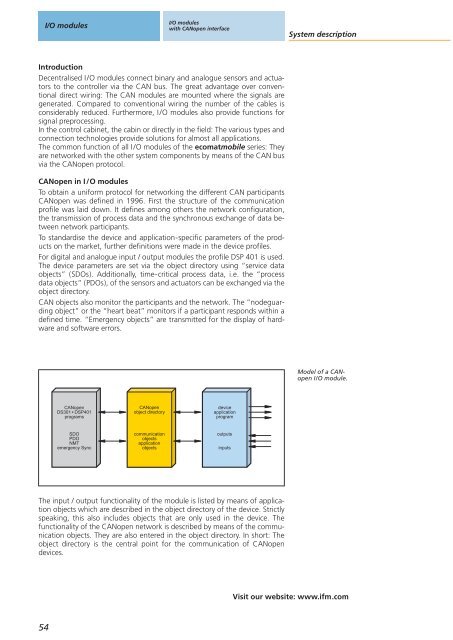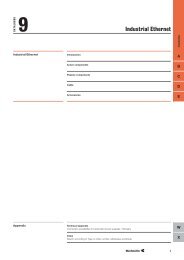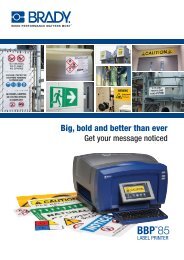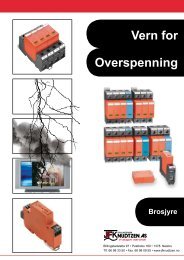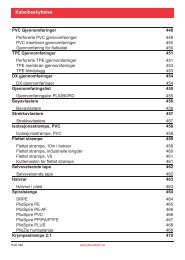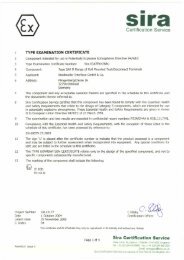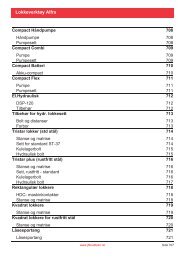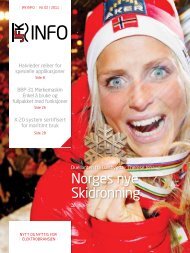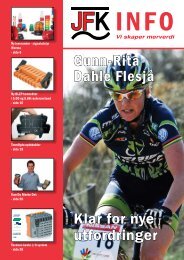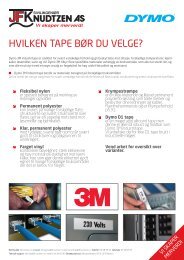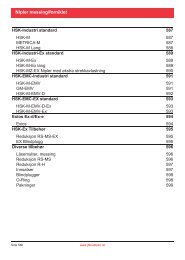Inclination sensors
Inclination sensors
Inclination sensors
- No tags were found...
You also want an ePaper? Increase the reach of your titles
YUMPU automatically turns print PDFs into web optimized ePapers that Google loves.
I/O modulesI/O moduleswith CANopen interfaceSystem descriptionIntroductionDecentralised I/O modules connect binary and analogue <strong>sensors</strong> and actuatorsto the controller via the CAN bus. The great advantage over conventionaldirect wiring: The CAN modules are mounted where the signals aregenerated. Compared to conventional wiring the number of the cables isconsiderably reduced. Furthermore, I/O modules also provide functions forsignal preprocessing.In the control cabinet, the cabin or directly in the field: The various types andconnection technologies provide solutions for almost all applications.The common function of all I/O modules of the ecomatmobile series: Theyare networked with the other system components by means of the CAN busvia the CANopen protocol.CANopen in I/O modulesTo obtain a uniform protocol for networking the different CAN participantsCANopen was defined in 1996. First the structure of the communicationprofile was laid down. It defines among others the network configuration,the transmission of process data and the synchronous exchange of data betweennetwork participants.To standardise the device and application-specific parameters of the productson the market, further definitions were made in the device profiles.For digital and analogue input / output modules the profile DSP 401 is used.The device parameters are set via the object directory using “service dataobjects” (SDOs). Additionally, time-critical process data, i.e. the “processdata objects” (PDOs), of the <strong>sensors</strong> and actuators can be exchanged via theobject directory.CAN objects also monitor the participants and the network. The “nodeguardingobject” or the “heart beat” monitors if a participant responds within adefined time. “Emergency objects” are transmitted for the display of hardwareand software errors.Model of a CANopenI/O module.CANopenDS301+DSP401programsCANopenobject directorydeviceapplicationprogramSDOPDONMTemergency SynccommunicationobjectsapplicationobjectsoutputsinputsThe input / output functionality of the module is listed by means of applicationobjects which are described in the object directory of the device. Strictlyspeaking, this also includes objects that are only used in the device. Thefunctionality of the CANopen network is described by means of the communicationobjects. They are also entered in the object directory. In short: Theobject directory is the central point for the communication of CANopendevices.Visit our website: www.ifm.com54


